Bare Root Essentials
February 18, 2016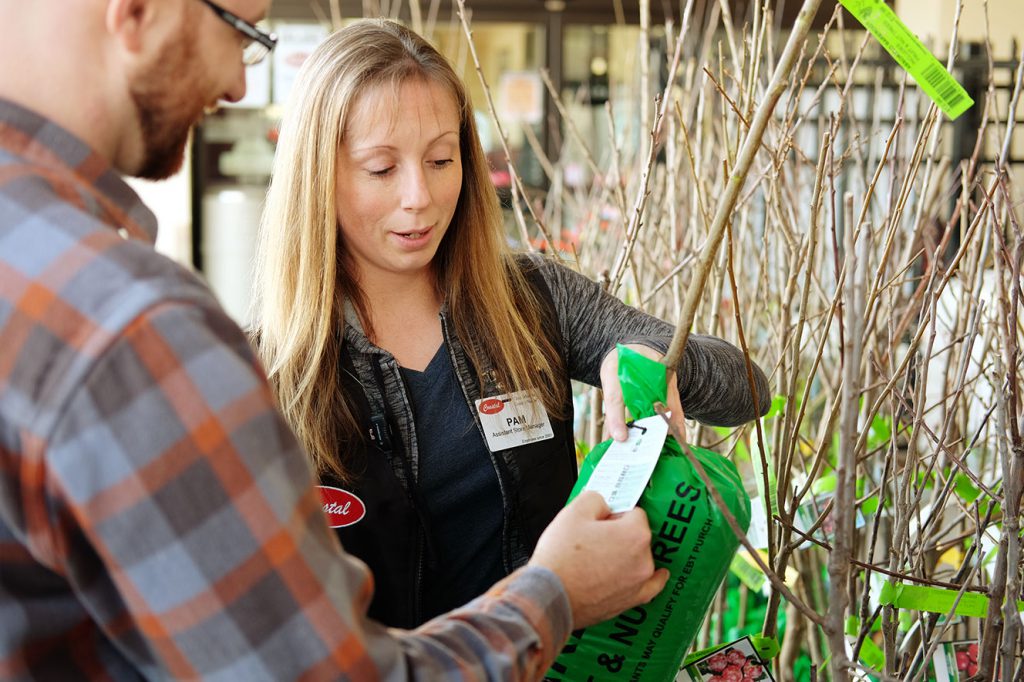
Plant your orchard for beauty, bounty, or both!
Start enjoying the fruits of your labor with these steps on planting bare root trees
Fruit and nut trees are both beautiful and bountiful. Planting and managing a small orchard around the home or farm can be rewarding to look at in the spring and fulfilling in the fall during canning season.
Young trees and shrubs need a fair amount of moisture to kick start their early development making late winter and early spring the best times to perform bare root plantings.
If you're not sure what varieties of trees or shrubs you should plant, don't be afraid to ask. Coastal associates are full of good advice on all kinds of things you need to know to make your projects a success.
Okay, you've got your trees, it's time to sharpen those shovels and get started!
Pre-soak
Preparing your bare root trees for prime time is pretty simple. Remove the tree from the packaging and soil, being careful to not to damage any of the roots. Place the tree into a bucket of water for 3-6 hours. Pre-soaking the roots will help stimulate the growth of smaller, hair-like roots.
Keep the soil contents of the packaging, we'll use that later.
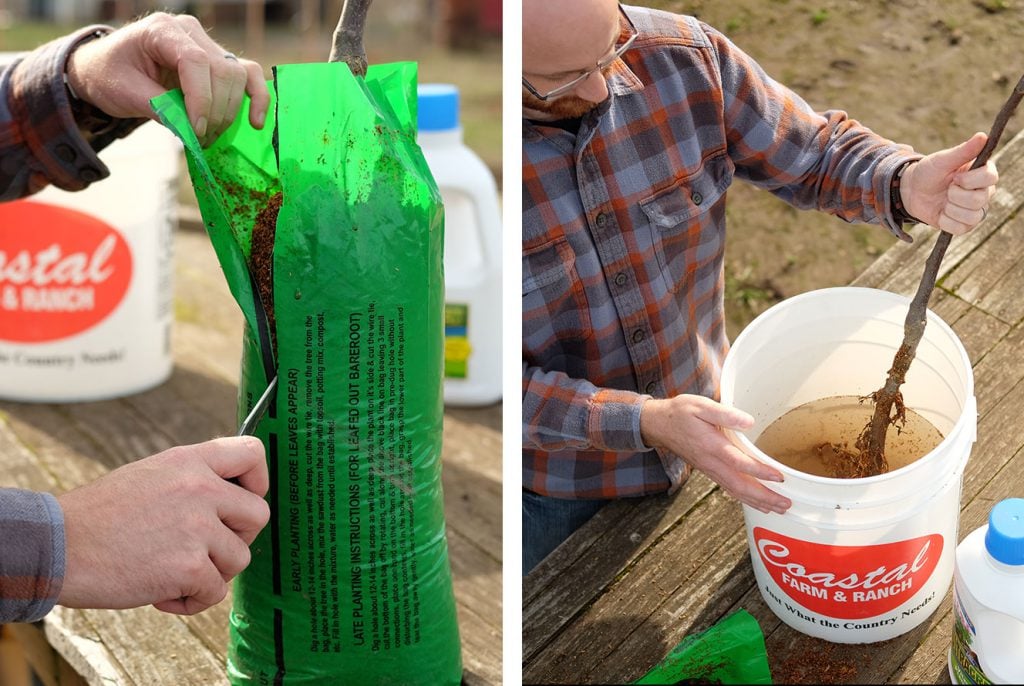
Dig it, baby
While the trees are pre-soaking, it's time to start digging. Create a hole that has a shallow bowl or saucer shape. The hole needs to be roughly twice as wide as the spread of the roots.
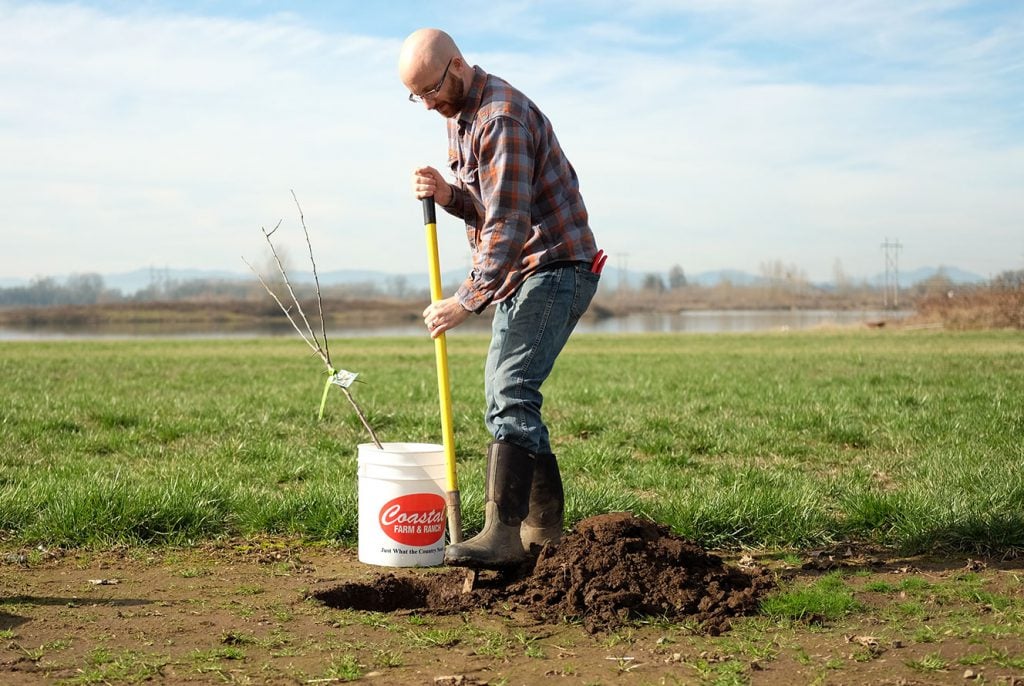
Depth Gauge
Hole depth depends on your tree. Take a look at the bark near the base of the tree, you should see a soil line or graft. Place a stick across your planting hole and set your tree into the hole. Carefully spread the roots around the hole, the soil line on the bark of the tree should sit about an inch above the stick. You may need to mound some dirt up in the center of the hole to raise the tree up to the appropriate height.
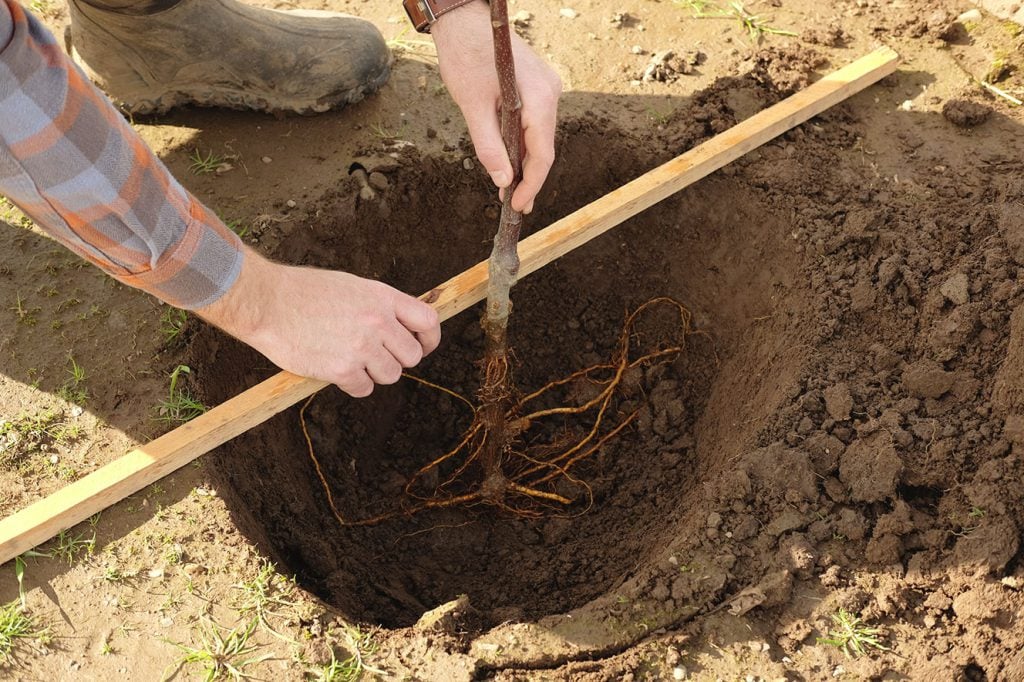
Kickstart!
To help your new tree get a jump in life, we recommend watering your tree with a dilution of 2 tablespoons of Vitamin B1 per 1 Gallon of water. Just cover the roots with dirt, making sure they have good contact with the soil, then pour in half of you B1 Mixture, making sure to get all the soil covering the roots wet. Continue adding your soil back into the planting hole until it is completely filled. Then go ahead and add the rest of your B1-Water to the tree. This will help jump start root growth and get you tree the foundation it needs to give you a long productive life!
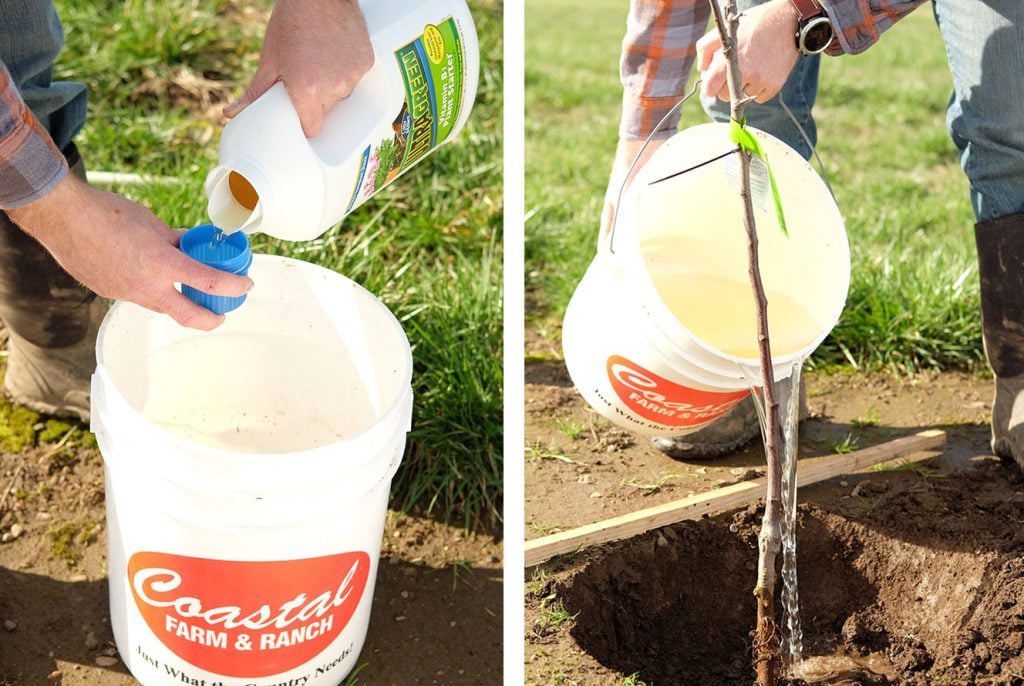
Fill'er up
Add your soil back into the planting hole. Be gentle and keep the soil a little bit loose. You'll want to protect the delicate roots and provide enough space for water to penetrate the soil. Also, make sure your tree doesn't settle with the weight of the soil.
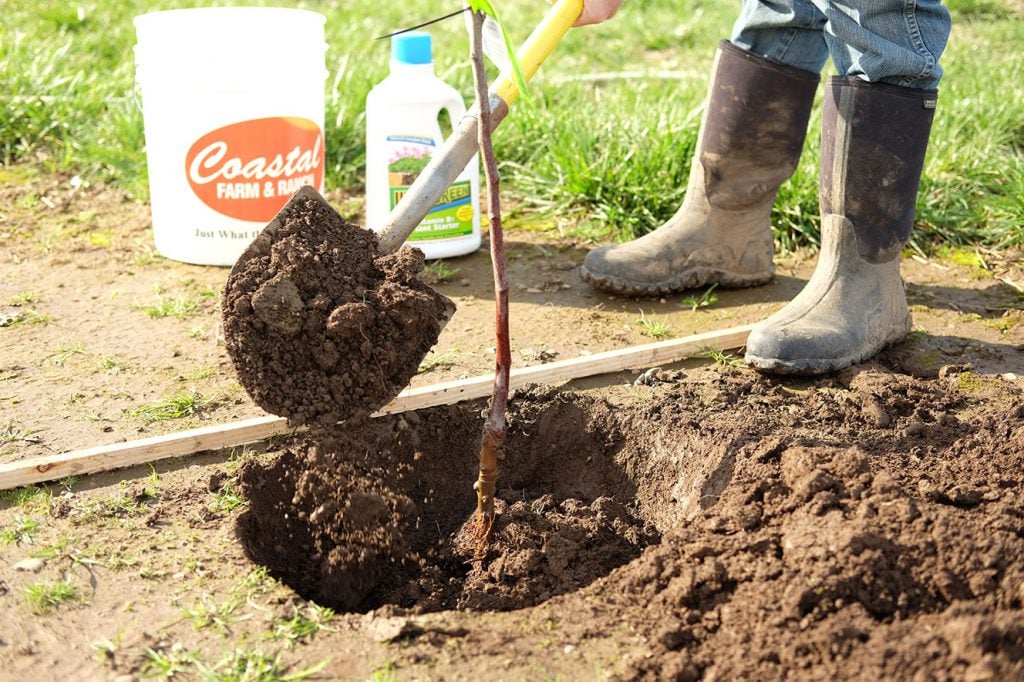
Top it off
Once you've got the soil in, top it off with the mulch from the package to help hold moisture and add nutrients.
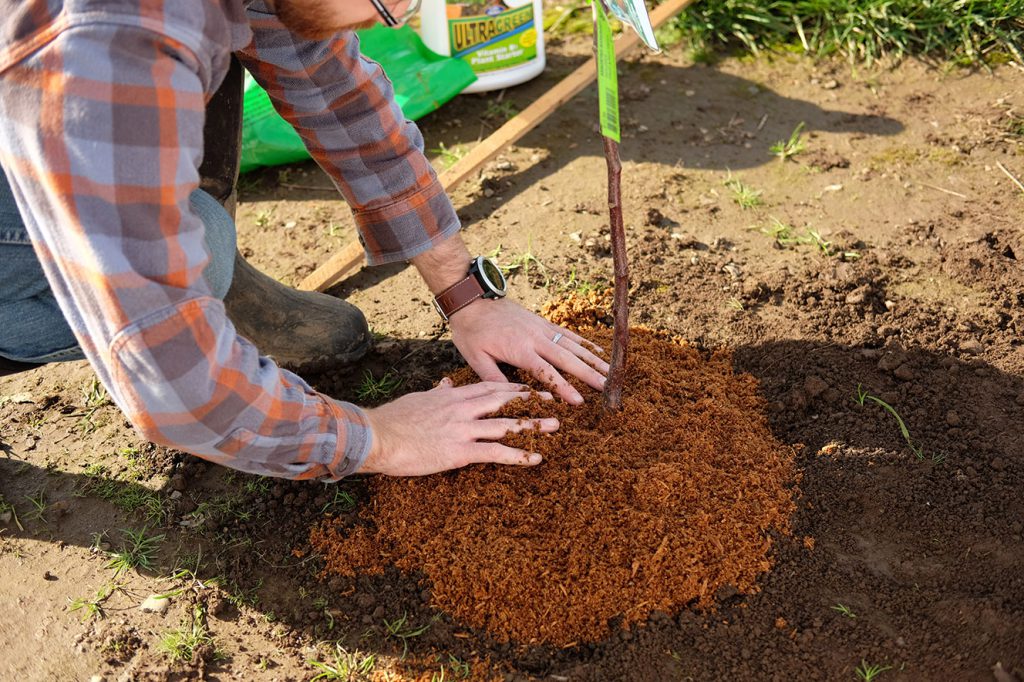
A little trim
With your tree in the ground and secured to a stake, trim a little off the top. Look for fruit spurs and trim just above at an angle. This will help stimulate growth of fruit bearing branches and keeps the tree from diverting nutrients to less important branches.
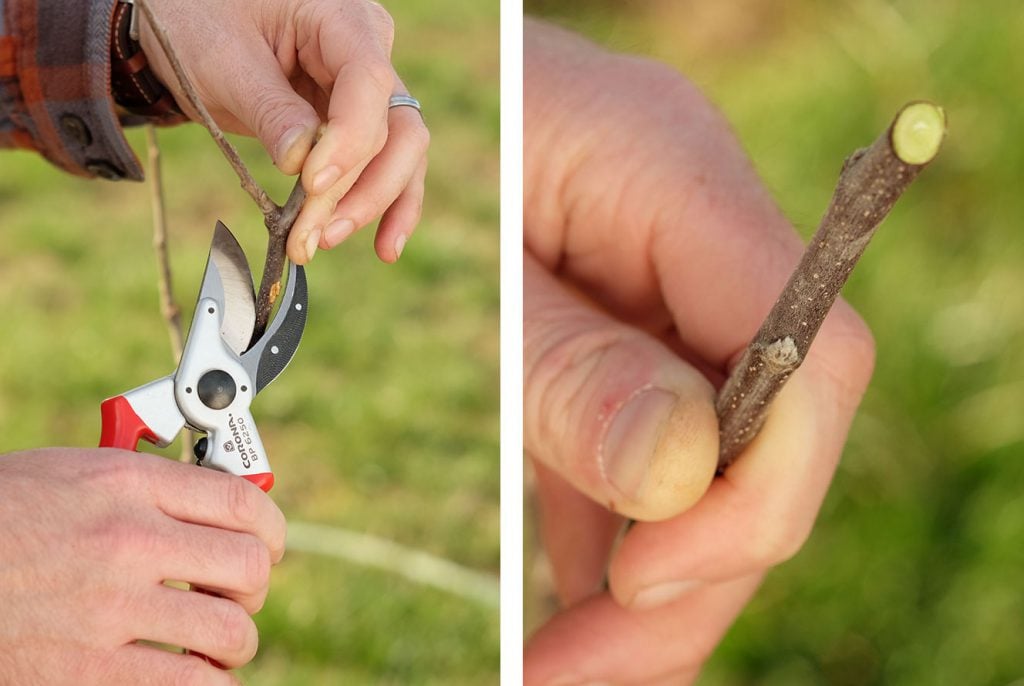
Pruning Tips
Whether your orchard is new or well established, good pruning will ensure long-term health of your trees and shrubs as well as increase productivity. Not sure where to prune? No problem, Coastal has you covered. With "Tree Pruning Tips and Tricks" you’ll be pruning your trees with confidence, improving the heath and bounty of your flowering and fruit trees. Plus there is a short video with tree expert Brian Roth. In the video Brian talks about shaping your tree and the four "D's" of pruning success. Quick, easy help from Coastal - Just what the country needs.
Do you have a small orchard? Share some of your tips and tricks in the comment section below. We'd love to hear from you.
